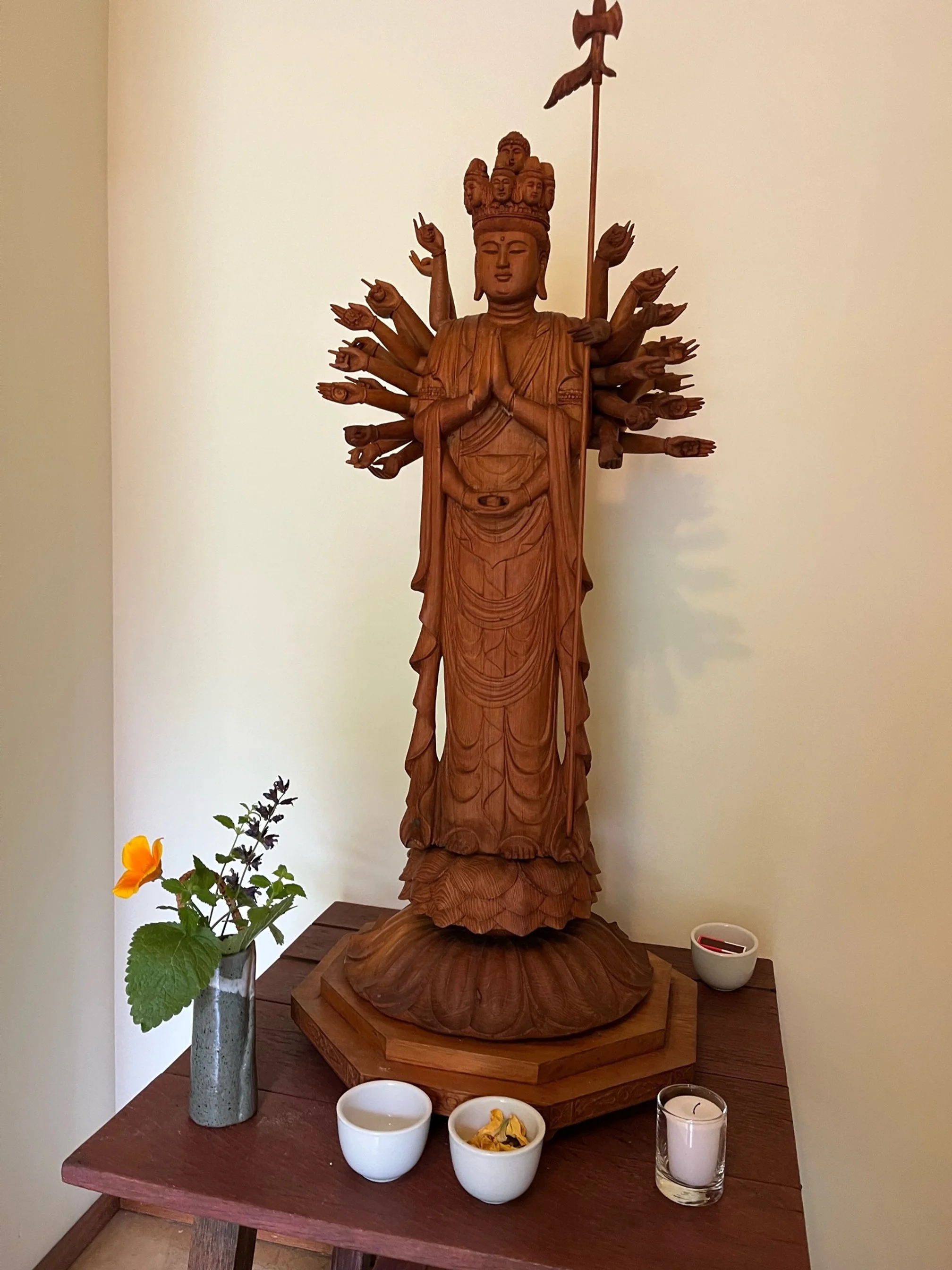Songs of Humans--Art by Michael Drebert
/photo and art by Michael Drebert
Much gratitude to Michael Drebert for hanging his work in the zendo entry hall during the pandemic. Only those who have attended in-person have been able to enjoy it. So here is this photo for the rest of you, as well as Michael’s artist’s statement below.
Songs of Humans, 2020
India ink on canvas, 4’x4’
This work is part of a larger body of ink drawings responding to life-lived near the Pacific
Ocean.
In particular, for Songs, the inspiration was a result of reading a book, which contains examples
of Ainu epic folklore. The book’s title is, Songs of Gods, Songs of Humans, written by Donald
L. Philippi, originally published in 1979.
The book itself, as an object, is beautiful — a striking Ainu design printed on cloth covered
hardback. It seems to almost smell of the North Pacific’s salted air, somewhere along the
Hokkaido coastline.
But also, inside the book’s cover, is an incredible exploration of Ainu epic folklore, “[t]his
collection and English translation by Donald Philippi contains thirty-three representative
selections from a number of epic genres including mythic epics, culture hero epics, women’s
epics, and heroic epics. This is the first time, outside of Japan, that the Ainu epic folklore has
been treated in a comprehensive manner.”1
I was enchanted by the book, and responded by making this drawing. I call these works
‘drawings’ as I propose that the texts hold the possibility of acting as a kind of picture. Or,
perhaps more suitably, Songs of Humans might be a kind of ‘calligraphic’ work — one, which
attempts to tell a story or give an impression through both a literal ‘reading,’ but also through the
way that it is rendered on the canvas. Regardless, it’s my hope that the work, in some way
reaches back, and across the Pacific Ocean to a time and place of unique human experience.
With respect to this intent, I sensed something ‘universal’ in these mythic epics. Something to do
with the experience of hearing the human voice as it sings, and being borne away without
necessarily understanding the songs’ literal, or applied meaning(s). I wonder if it is no different
from, say, hearing the Three Refuges chanted in Pali, at the end of a Zen sesshin — where a
transmission of intention through tone, form, consonance, dissonance, can leave attendants
overcome with wonder at its sensual offering.
Songs of Humans, then, acts as an homage to the history of human voice as it relays a ‘gift’ of
intention to the human community.
1 Princeton University Press. (n.d.). Songs of Gods, Songs of Humans: The Epic Tradition of the Ainu





